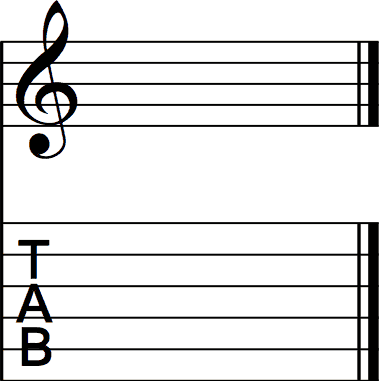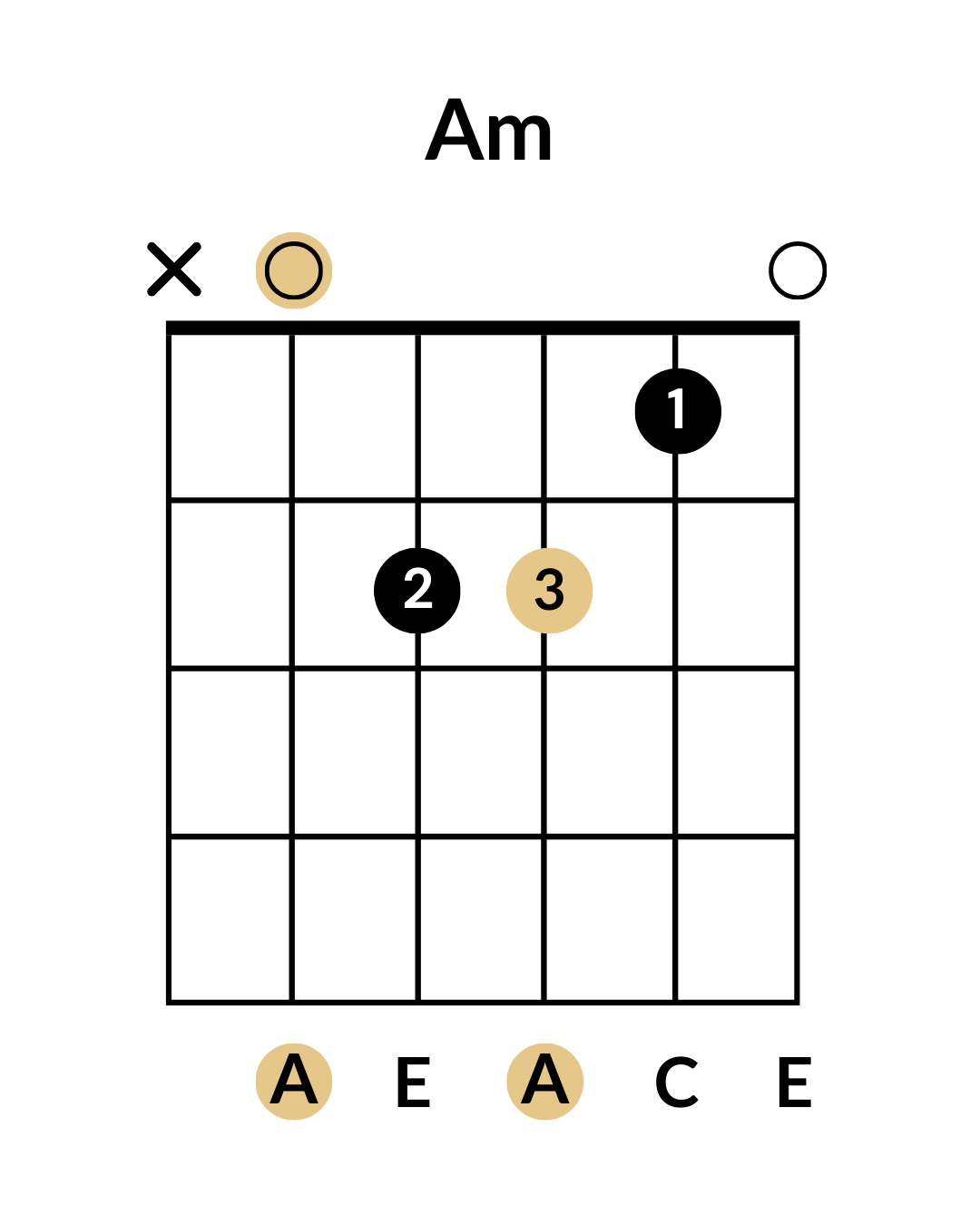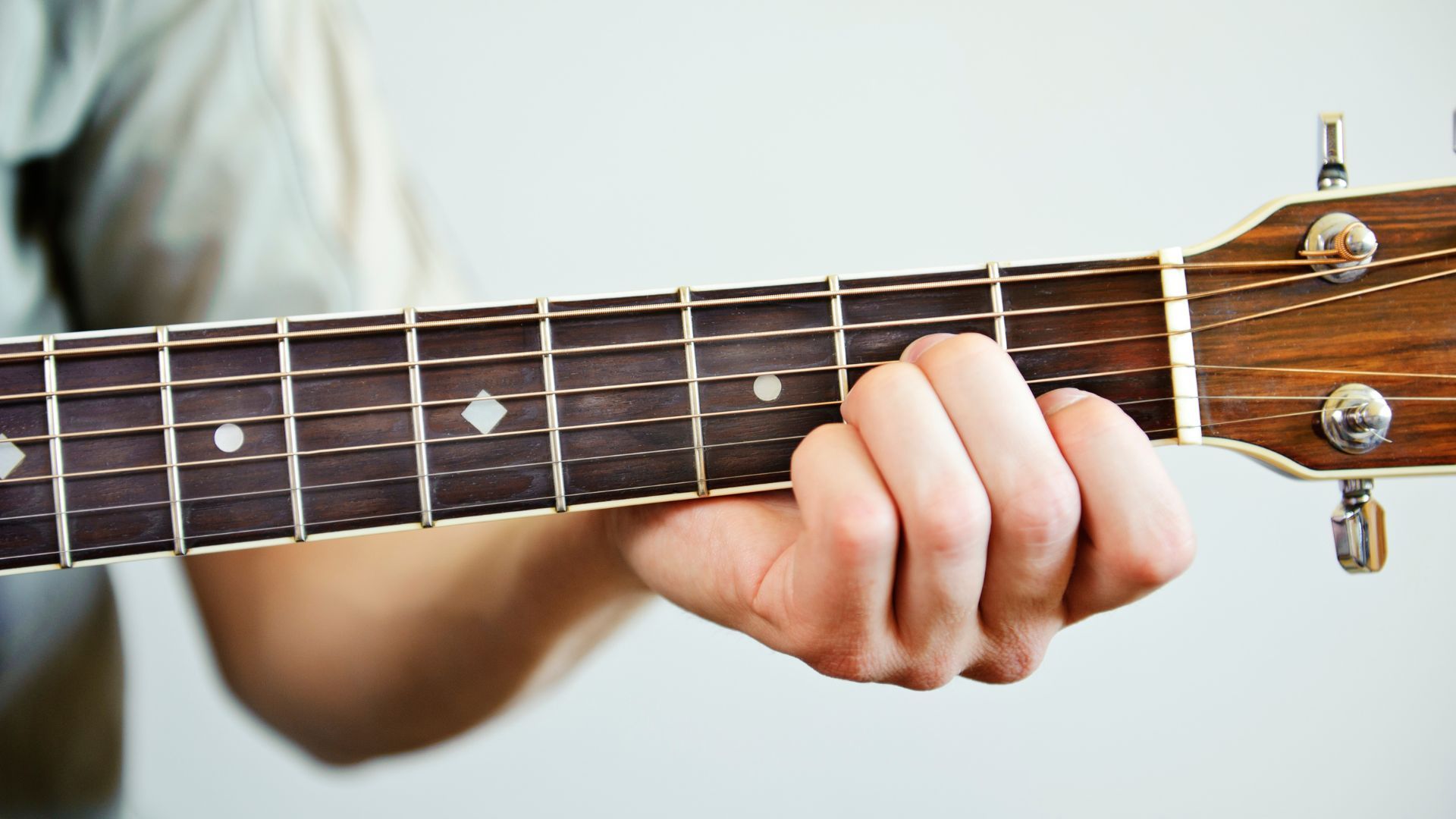The A (natural) minor key is the most beginner-friendly minor key on guitar. It shares the same notes as C major (its relative major) but centers on A, giving it a melancholic and emotional character. The A minor scale contains no sharps or flats: A, B, C, D, E, F, G.
They share the same notes but offer different emotional tones:
- C major: bright, neutral
- A minor: moody, expressive
Hence, it sounds expressive and works across genres: rock, folk, classical, metal, and pop

Since A minor is relative to C major, it shares the same key signature (no sharps or flats).
Famous Songs in A Minor
- “House of the Rising Sun” – The Animals
- “Stairway to Heaven” (intro) – Led Zeppelin
- “Nothing Else Matters” – Metallica
- “Nights in White Satin” – The Moody Blues
- “Boulevard of Broken Dreams” – Green Day
Famous songs in the key of A minor include Californication by the Red Hot Chili Peppers and Dream of Mirrors by Iron Maiden.
A Minor Scale
The A natural minor scale includes: A – B – C – D – E – F – G – A
This scale is perfect for solos, melodies, and improvisation in minor-key contexts.

A Harmonic Minor Scale
The A harmonic minor scale introduces a raised 7th (G# instead of G) to create stronger tension and resolution, especially toward the dominant chord (E major): A – B – C – D – E – F – G# – A
This scale is used in classical, flamenco, metal, and neoclassical solos for its dramatic sound.
A Melodic Minor Scale
The A melodic minor scale raises both the 6th and 7th degrees (F# and G#) when ascending, and reverts to the natural minor scale when descending:
- Ascending: A – B – C – D – E – F# – G# – A
- Descending: A – G – F – E – D – C – B – A
It’s often used in jazz and fusion for a smoother melodic contour and modal versatility.
In Summary:
| Scale Type | Sound | Unique Notes | Difficulty Level on Guitar |
|---|---|---|---|
| Natural Minor | Dark, sad | None | ⭐ Easy |
| Harmonic Minor | Dramatic, exotic | G♯ | ⭐⭐ Medium |
| Melodic Minor | Smooth, jazzy | F♯, G♯ (ascending) | ⭐⭐⭐ Medium/Advanced |
Fingering the A Minor Chord on Guitar
The open A minor chord is simple and widely used:
- Place your index finger on the 1st fret of the B string
- Place your middle finger on the 2nd fret of the D string
- Place your ring finger on the 2nd fret of the G string
- Strum from the A string down

A Minor Chord Attributes
- Intervals: 1 – b3 – 5
- Notes: A – C – E
- Chord Symbols: Am, Amin, A-
A Minor Diatonic Chords
Since the A minor key often combines two or more scales, it is used in a number of chords. Here are some examples:
Scale degree chords of the A natural minor scale:
i ii° III iv v VI VII
Am Bmb5 C Dm Em FG
Scale degree chords of the A harmonic minor scale:
i ii° III+ iv V VI VII°
Am Bmb5 C+ Dm E F G#mb5
Scale degree chords of the A melodic minor scale:
I ii III+ IV V vi° vii°
Am Bm C+ D E F#mb5 G#mb5
The most common chords in A minor are from the A natural minor scale, except for the 5th scale degree which is borrowed from A harmonic minor:
i ii° III iv V VI VII
Am Bmb5 C Dm E F G
Popular Chord Progressions in A Minor
- i – iv – v: Am – Dm – Em
- i – VI – III – VII: Am – F – C – G
- i – iv – VII – III: Am – Dm – G – C
- i – V – i: Am – E – Am (using the harmonic minor V chord)
Cadences in A Minor
- Perfect Cadence (V – i): E – Am
- Plagal Cadence (iv – i): Dm – Am
- Deceptive Cadence (V – VI): E – F
Tips for Playing in A Minor
- Use Emotive Strumming: A minor sounds great with fingerpicking or dynamic strumming.
- Try Harmonic Minor: Add G# to the A minor scale for a more dramatic, classical sound.
- Improvise in A Minor Pentatonic: Especially useful for blues and rock.
- Explore Chord Substitutions: Try Am7, Asus2, and other variations.
Conclusion
The A minor key is a powerful entry point into the world of minor keys. Whether you're writing sad ballads or dark riffs, it offers a wide expressive palette. It’s a must-know for every guitarist.
Learn More with Fretello
At Fretello, we’re here to support your guitar journey. Our Learn Path and Masterclass Series include structured lessons and exercises to help you master minor keys like A minor. Start for free and grow your skills with us!